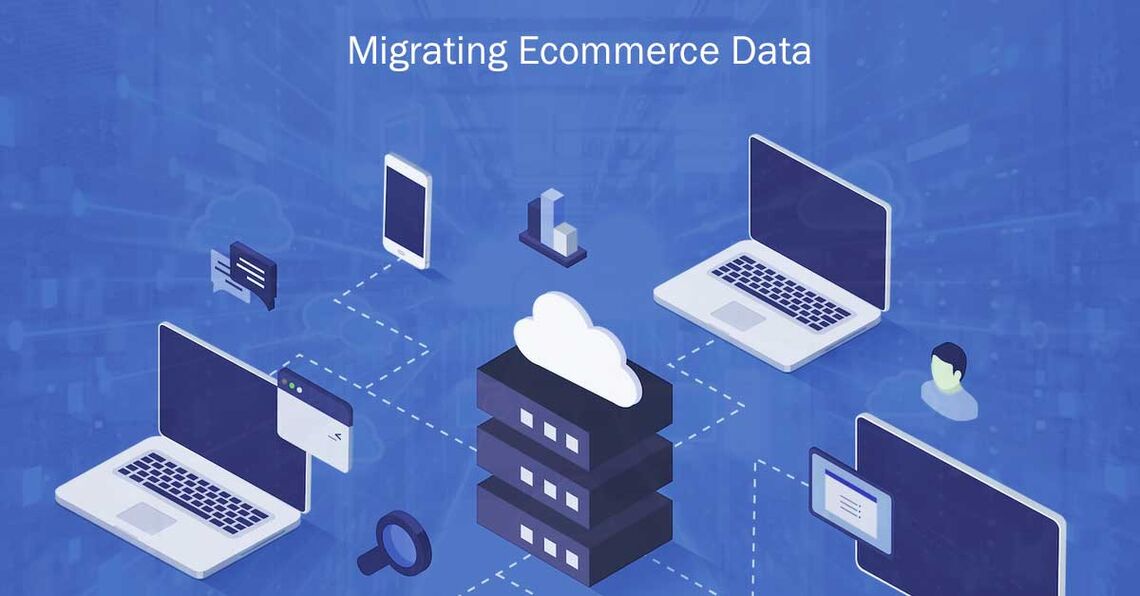Blog
How to Migrate your Ecommerce Website and Data
What does it take to migrate your ecommerce and website data? There are some important things you need to think about first. Let's review some of them.

What does it take to migrate your ecommerce and website data? There are some important things you need to think about first. Let's review some of them.


February 9th, 2023
What does it take to migrate your ecommerce and website data? There are some important things you need to think about first. Let's review some of them.
If you've ever moved from one house to another, you know it takes a lot of planning. You have to turn off utilities at one location and turn them on at another. You have to hire a big truck to move boxes and make sure it shows up on the correct date. Migrating your ecommerce website from one platform to another is kind of similar, the moving just happens digitally or in the cloud.
Migrating ecommerce data can be a complex process with many critical steps. There are many activities involved including migrating data, updating your domain to a new host, updating customers and making sure nothing breaks along the way. It's also important to ensure that the data is transferred securely, as any errors or security breaches can have serious consequences on a company's reputation. So how do you do it the right way? We're glad you asked. Let's explore how to ensure a migration happens without a hitch.
Migrating enterprise website data is rarely easy. While the information may seem similar between two systems, the schema (behind the scenes) is never the same. Field names, database types, and data relationships are all unique from one platform to another. Migrating the data involves matching these corresponding fields, creating new fields and developing parity between the source and destination. You can see why it takes time to do it properly.
The last thing your business wants is to incur any downtime due to a poor migration. Downtime can cause a loss of customers, revenue, reputation and a decrease in SEO rankings. An ecommerce site cannot afford to lose trust due to an unreliable website.
To ensure that customers have a positive experience, it's important to plan ahead and minimize downtime when migrating your data. This can be done by using a staging environment, testing the new website thoroughly, and having a backup plan in place in case anything goes haywire.
Businesses migrate for a few different reasons including to improve features, change the user experience or improve performance. Once you know why you're moving, you need to determine what data you really need. This is where creating a detailed plan will ensure a successful migration. For an ecommerce store, you must consider the product catalog, customer accounts, and order history. Those are the most obvious items however, many merchants forget the other aspects like a blog (including posts and comments) and site-specific customizations or settings like apps, third-party integrations and external data services.
Migrating ecommerce data is a business-critical event for any enterprise company. It's not something you want to tackle lightly and you certainly don't want to attempt it without proper testing and QA protocols. Just like a band rehearses for a show, you should run some small tests of your data migrating to see how it works before you attempt the whole thing.
Testing before you migrate your data is incredibly important. It ensures that all of your information is transferred correctly and that nothing is lost during the process. It also allows you to identify any potential issues such as compatibility or errors in the data. It's always best to start with a small subset of data and run the migration on that data first. Don't just pick new data, try some old information as well. It's you're migrating orders from 8 years ago, try sending some of those as a test. You may find that legacy data has to be treated differently from newer data.
Obviously, you want to avoid any problems during the migration process. The best thing you can do is to follow a checklist to ensure you're getting it right. It works for NASA when they're launching rockets into space, so a checklist should work for migrating ecommerce data. It should look something like this:
Backup existing website
Select the new platform
Investigate the integration and migration capabilities of that new platform
Determine what needs to be transferred
Clean and organize data
Transfer data
Test the new website
Launch your new ecommerce site
Communicate to existing customers
Monitor the site
Ecommerce data migration is a big task with lots of moving parts. It's not something that should be tackled without a proper plan and checklist. It's best to work with an experienced partner who knows the ins-and-outs of a complex data project.